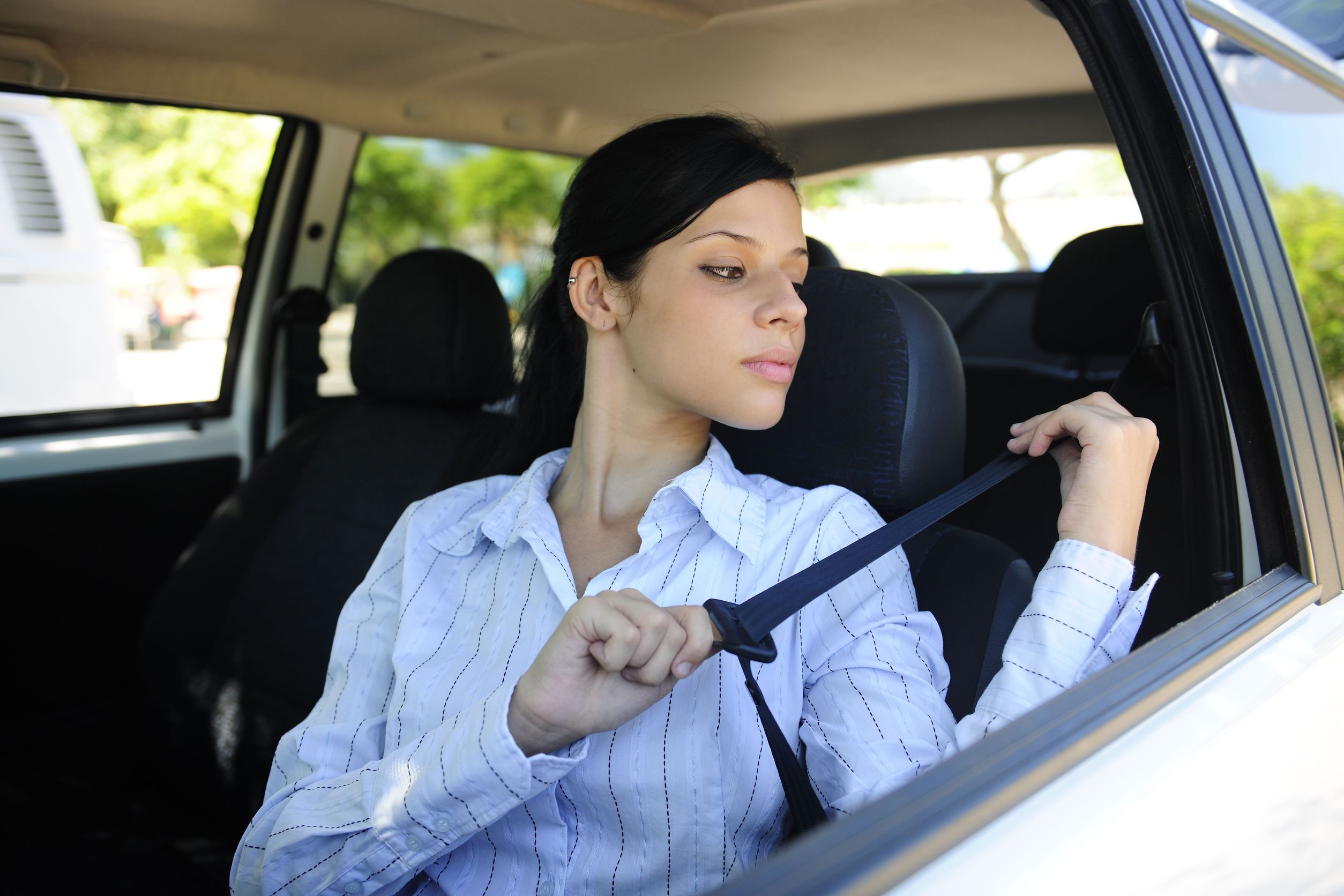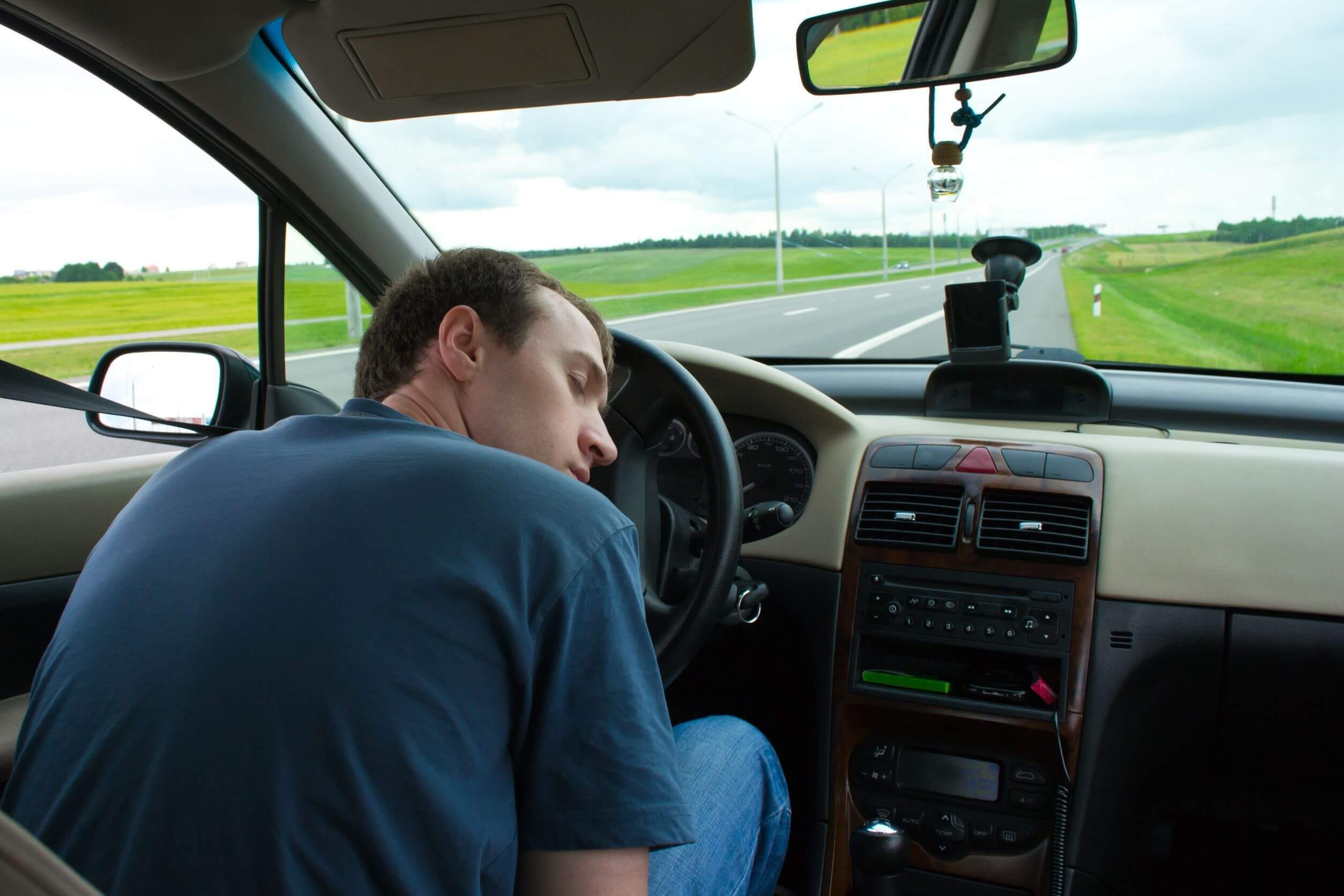From automatic braking systems to electronic stability control, automobile technology continues to evolve to better protect drivers and vehicle occupants. Now, one new innovation may help prevent people from driving while drowsy—something that is a well-documented risk factor in serious and sometimes fatal crashes.
Harken, a publicly and privately funded European consortium, recently announced in a press release that they have developed a seat belt sensor designed to help wake drivers up if they begin falling asleep at the wheel. The sensor system was made by weaving fibers and yarns with electrical properties into the shoulder belt and seat pad of a car. When a driver is sitting in the seat and wearing their seat belt, the sensors will measure their heart rate and breathing rate. Because both respiration and heart rate slow down when a person is asleep or about to fall asleep, the sensors will be able to identify when a driver is at risk for falling asleep and needs to pull over.
Sources like Popular Scienceare celebrating the new Harken system for finding a way to monitor a driver’s alertness (or lack thereof) without the need for the sensors to be in direct contact with the driver’s skin. Sensors built into the seat and shoulder belt of vehicles would certainly be less invasive and more practical than electric nodes that must be attached to a person’s skin, making it more likely that this technology could actually be implemented in new vehicles in the coming years.
The prototype for Harken’s sensor currently uses a signal-processing unit to process sensor data in real time, but it’s so far unclear how the system will alert drivers that they are about to fall asleep. Perhaps the system could emit a loud noise to rouse the sleepy driver and warn them that they need to get off the road for their own safety and the safety of others. Of course, at that point it would be the driver’s responsibility to heed the warning and find somewhere safe to pull over.
Why We Need a Device like the Seat Belt Sensor
A device like Harken’s seat belt sensor can’t come soon enough, as drowsy driving is a factor in many car accidents, leading to an estimated 5,000 to 6,000 fatal accidents per year, according to a special report from the Centers for Disease Control. Studies have shown that driving while tired makes it difficult for people to focus on the road and their environment, slows reaction time, and impairs a driver’s decision-making abilities.
Despite the dangers, few states have specific laws to penalize drowsy drivers, and many people continue to drive while fatigued because they don’t realize what a serious problem it can be. A study conducted by the National Sleep Foundation revealed that 60% of American drivers say they have driven while feeling sleepy, and 37% actually admit to having fallen asleep at the wheel in the past year. Drivers who are most at risk for falling asleep include commercial truckers, night shift workers, people with untreated sleep disorders, and people who are chronically sleep deprived.
While all drivers should take personal responsibility when they begin feeling too tired to drive, a seat belt sensor that alerts people when they are about to fall asleep could be a valuable safety feature for drivers who continually convince themselves that it’s okay to drive when they’re tired.
How to Curb Drowsy Driving Before the Release of the Harken Device
Harken has not announced when they are hoping to introduce their seat belt sensor into new vehicles, so in the meantime, it’s up to all drivers to recognize when they are too fatigued to drive. Warning signs that you should watch out for include:
- Frequent blinking or yawning
- Disconnected thoughts or trouble remembering the last few miles
- Missing exits or traffic signs
- Nodding head
- Heavy eyelids
- Drifting in and out of the lane or hitting a rumble strip on the shoulder
- Feeling restless or irritable
It is never a good idea to try to “fight” your fatigue by turning up the radio or blasting the air conditioning, or to tell yourself that you’re just going to push through a few more miles before you stop. Instead, look for a place where you can safely pull all the way off the road and take a nap. If drowsy driving is a frequent problem for you, it may be a sign that you are chronically sleep deprived or suffer from a sleep disorder and need to talk to your doctor.
If you’re injured in an accident caused by a drowsy driver, contact an auto accident attorney as soon as possible in order to fight for compensation and hold that driver responsible for their negligent behavior.
About the Author:
Jeffrey Braxton is a trial lawyer in Fort Lauderdale who has devoted his 22-year career to the practice of personal injury law. As lead trial attorney for The South Florida Injury Law Firm, Jeff has litigated thousands of cases and is a member of the Million Dollar Advocates Forum, an exclusive group of attorneys who have resolved cases in excess of one million dollars.






